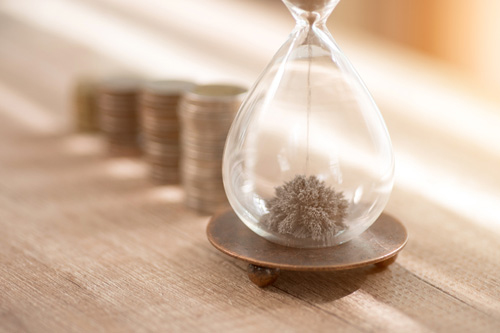Always believe in gold, but is it indestructible?

Related links
No related links
Another quarter closes and we all look to which assets flew and which flagged. It was the somewhat heavy, ungainly gold that was one of the key fliers, rising 19% in USD terms for its best quarter since 1986. The sometime ‘digital gold’ Bitcoin conversely fell over 12%. With the focus on tariffs, warzones, DeepSeek’s AI launch, the Mag 7’s move into bear territory perhaps the physical solidity of gold provided respite. So how to look at gold from here?
The late Julian Baring, self-confessed ‘gold bug’ and founding fund manager of what is now known as the BlackRock Gold & General Fund, used to recommend investors hold around 5% of their portfolios in his fund, further advising if it grows to 10% to sell back to 5%, and if it dips to 3% top it back up to 5%. Not a bad strategy when it comes to any investment but especially so for the inert but erratically priced metal that is gold.
The fascination with gold is perhaps founded on its lustre, and its early use as a store of value and for paying for goods and services. This was augmented by its use to underpin currencies up until most notably when Nixon terminated the convertibility of the US Dollar into gold in 1971. Often seen as a hedge against inflation, it is more likely to help when hyper-inflation is the issue with only a 16% hedge against long-run inflation (according to Forbes in September 2024). However now we have inflation volatility again, geopolitical risk in recent years leading to the seizure of cash deposits and assets from Russia, so it is perhaps no surprise that an acceleration in central bank buying of gold is seen as likely to underpin demand for some time. They are perhaps attracted also by its limited supply and key characteristics. It is the only golden metal, is unreactive as a noble metal, but is very malleable with a single ounce being capable of being stretched into a 5-mile long thread, or beaten into a 300-sqare foot sheet but it cannot be destroyed outright.
It doesn’t take much change in demand to move the price of gold, with a steady 80%+ of annual production taken by the jewellery industry. This recent trend for central banks’ renewed interest in gold coincides with mining being in the ESG spotlight and, with higher costs of borrowing, these two factors could further limit supply of this already scarce commodity.
The downside of gold as an investment is its lack of yield, costs of safe custody, and the fact that it has lagged stocks over recent times. Another factor to consider is gold’s changing relationship with the US dollar over time. Returns are similar over the past 5 years for bullion and the broad trade-weighted US dollar but with significant divergent periods. There is also the question of how to hold it. Coins and bullion have tangibility on their side but come with security needs and or custody costs.
Gold mining shares come with gearing, operational risks and other stock specific aspects and are probably best held through a specialist fund like the one Julian used to run. We currently have a position in gold within our portfolios via an ETF and intend to hold on to it for these favourable supply/demand characteristics, the diversification it offers, and its potential for offsetting geopolitical and inflation risks that would affect other parts of the portfolio. We might even employ the Julian Baring sizing strategy over time…



